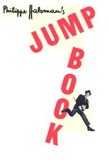Photography and Photographers
Revolver Camera
Paul once posted about a camera that looked like a gun. This does that one better. It's a camera AND a gun. Pull the trigger and it simultaneously takes a picture of and shoots a bullet at whomever you're aiming the gun at. It was created and used in the late 1930s in New York City. [via petapixel]
Posted By: Alex - Sun May 05, 2013 -
Comments (3)
Category: Guns, Photography and Photographers, 1930s
Jumpology
Philippe Halsman became famous as the photographer who took photos of people jumping. In 1959 he published his Jump BookAfter the publication of his book, jumpology became a popular fad for a while. People would use polaroid cameras to take photos of each other at parties jumping. Reminiscent of the more recent planking fad.
Some examples of Halsman's jump photos are below, and you can find more of them over at Iconic Photos:

Hattie Jacques

Aldous Huxley

The Duke and Duchess of Windsor
Posted By: Alex - Sat Mar 23, 2013 -
Comments (4)
Category: Photography and Photographers, 1950s
In one end, out the other
Apologies in advance for the crappy post. I'll let the artist, Gabriel Morais, explain his project:4.5kg of beet root in 36 hours.
3.5kg of Froot Loops in 30 hours.
4kg of sweet corn in 36 hours.
So in the photos below, he shows what he ate first, followed by what eventually came out the other end.

Posted By: Alex - Fri Mar 22, 2013 -
Comments (6)
Category: Art, Body, Food, Photography and Photographers, Excrement
Naked woman in a box of rabbit fur
The University of Washington Library staff posted this mysterious image on their flickr stream. Why is this naked woman lounging in a box of rabbit fur? No one knows. The only info the UW staff has is that the image was taken around 1930 by photographer Vern Grost, perhaps in Washington state. They speculate it may show some kind of promotional event for the Angora rabbit fur industry.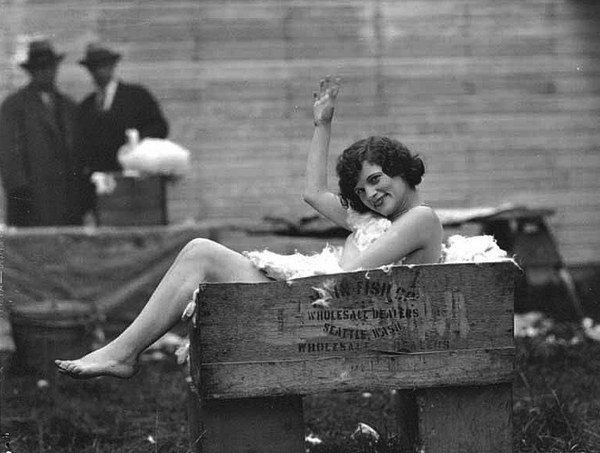
Posted By: Alex - Fri Jan 18, 2013 -
Comments (5)
Category: Photography and Photographers, 1930s
Alexa Meade’s photographs that look like paintings
From her website: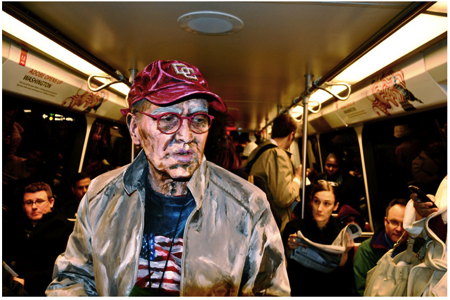
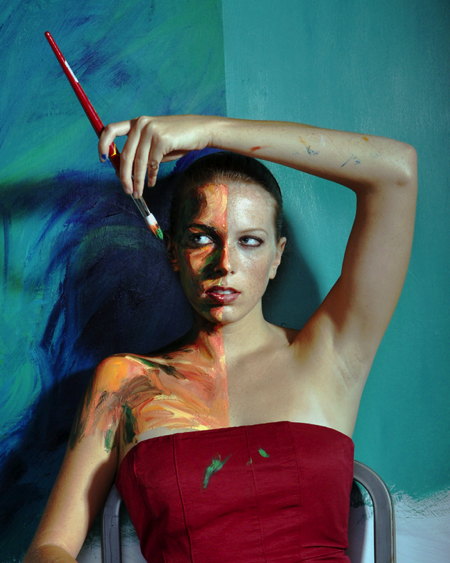
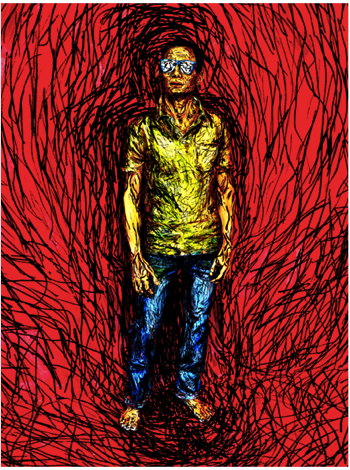
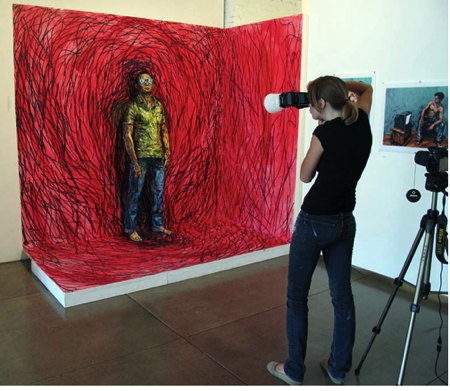
Posted By: Alex - Wed Jan 16, 2013 -
Comments (4)
Category: Photography and Photographers
Scotch Tape Portraits
Photographer Wes Naman has a series of portraits of people with scotch tape wrapped around their face. I think I've found the appropriate way to pose for my facebook photo. (via eleven acres)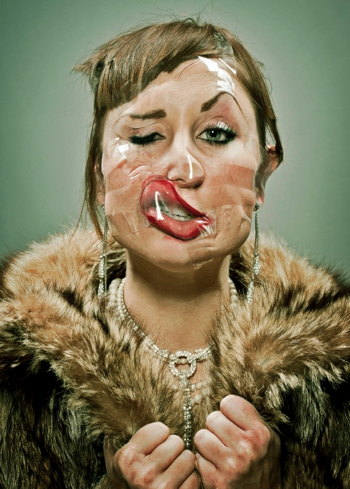
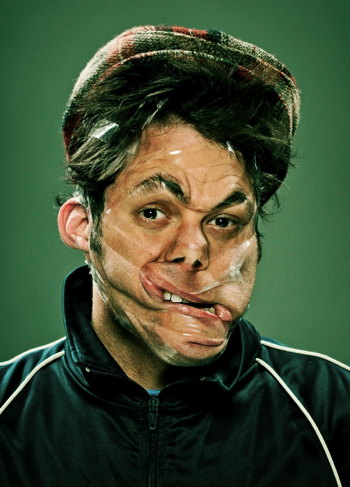
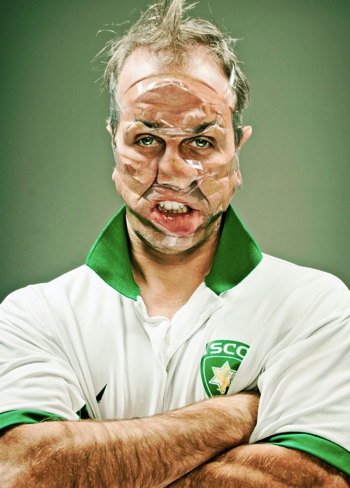
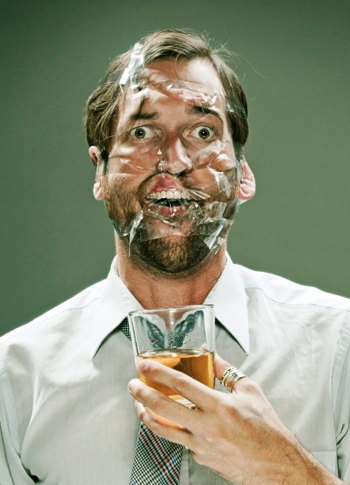
Posted By: Alex - Fri Dec 21, 2012 -
Comments (6)
Category: Photography and Photographers
Mind-blowing Milky Way and Aurora Borealis Time Lapse
I am officially dumb-founded by the incredible images in this video.Click on the "x" to enjoy this in full screen.
Brad Goldpoint combines over 7000 images to create this work of art.
Here's his website.
http://goldpaintphotography.com/
Great images of the Milky Way and the Aurora Borealis, plus mysterious lights which streak across the screen. Meteorites? Airplanes? UFO's? Car headlights? Satellites?
Way cool, whatever they are.
Posted By: gdanea - Tue Oct 23, 2012 -
Comments (3)
Category: Photography and Photographers
Vintage Photos on eBay
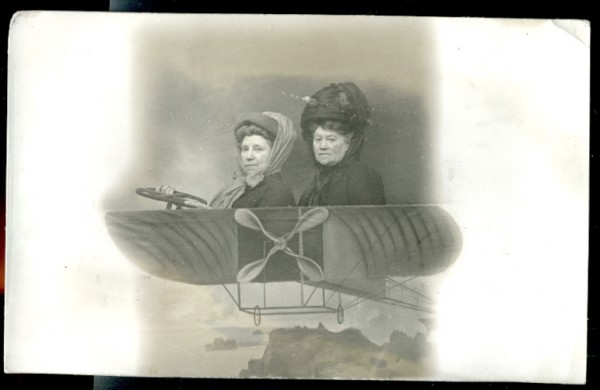
Yesterday I went to eBay and searched on the string "vintage photo." I got 417,368 hits. The first item in that catalog is reproduced above. So many of the subsequent ones were almost as bizarre.
Happy viewing! Please report back here in the Comments with your own best finds!
Posted By: Paul - Thu Oct 04, 2012 -
Comments (8)
Category: Eccentrics, Photography and Photographers, Nineteenth Century, Twentieth Century
Mouse Takes Photo Of Its Own Death
This photo, with the accompanying caption, ran in papers back in July 1952.
A love of photography and a dislike of mice caused a London photographer to rig this trap that caused a mouse to take his own picture and his life at the same time. The trap was wired to the camera so that tripping of the trap mechanism also tripped the camera shutter. The killing spring is about to come down on the neck of the rodent here as its first nibble at the cheese sprung the trap.
(via eBay)
Posted By: Alex - Sun Sep 30, 2012 -
Comments (5)
Category: Animals, Death, Photography and Photographers
Your Brain on Mescaline
In the early 1950s, German photographer Leif Geiges created a series of abstract images in order to try to portray "exactly what the mescaline subject sees and hears during the course of his artificial psychosis" — as Newsweek put it, which ran his images in its Feb 23, 1953 issue. This was before mescaline was made illegal, back when psychiatrists still believed that the experience of taking mescaline approximated the mental state of a schizophrenic and therefore could be of great experimental value.As for the mescaline imagery itself, Newsweek explained:

"Wallpaper patterns come to life, change to demoniac caricatures, threaten immediate destruction"
More in extended >>
Posted By: Alex - Tue Sep 18, 2012 -
Comments (12)
Category: Dreams and Nightmares, Drugs, Psychedelic, Photography and Photographers, Science, 1950s, Brain, Mental Health and Insanity

| Who We Are |
|---|
| Alex Boese Alex is the creator and curator of the Museum of Hoaxes. He's also the author of various weird, non-fiction, science-themed books such as Elephants on Acid and Psychedelic Apes. Paul Di Filippo Paul has been paid to put weird ideas into fictional form for over thirty years, in his career as a noted science fiction writer. He has recently begun blogging on many curious topics with three fellow writers at The Inferior 4+1. Contact Us |

